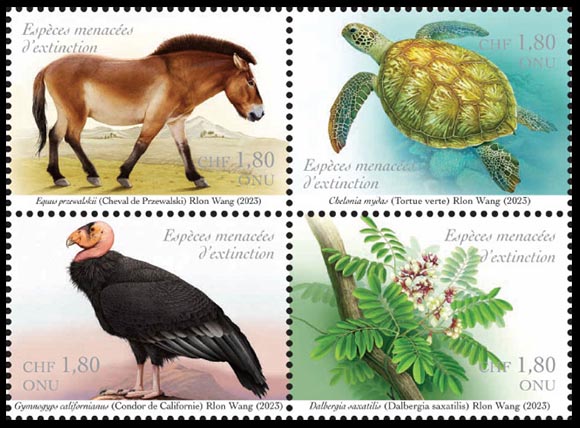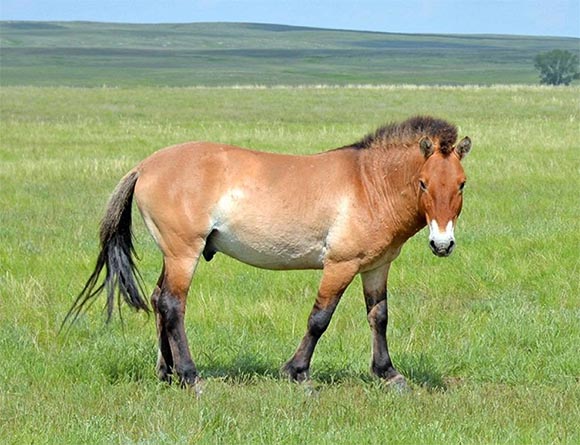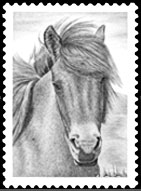
On March 3, 2023, the UN Geneva office issued a series of postage stamps "Endangered Species".
The series is dedicated to the 50th anniversary of CITES - Convention on International Trade in Endangered Species of Wild Fauna and Flora. An international agreement signed in 1973 is designed to protect endangered wild animals and plants. The Convention regulates the rules for trade in more than 38,000 species of wild animals and plants so that all transactions comply with the law, are transparent and, of course, do not harm the population of protected animal species.

For more than 25 years, the UNPO has been issuing stamps in support of CITES to showcase the diversity of forms of wild fauna and flora. The 2023 stamps feature Przewalski's Horse (Equus przewalskii), Green Sea Turtle (Chelonia mydas), California Condor (Gymnogyps californianus) and Dalbergia (Dalbergia saxatilis).
The series of postage stamps was designed by Chinese illustrator Rlon Wan (王荣亮). Most of his work combines traditional oriental elements with western forms and presentation. The artist works with rich colors, which makes his style very effective. This is not the first time Rlon Wang has created postage stamps, in 2019 he also worked on the UN series with endangered animals. The stamps he created have a wonderful style and detail, animals and plants look very realistic on them.

Prezewalski's horse is a species of wild horse that lived in Asia. The Przewalski's horse has a strong, dense build, a straight and thick neck with a large head. The color of Savrasai horses is sandy-yellow with dark limbs, mane and tail. Along the back from the withers to the tail is a dark belt. The mane is short, standing, without bangs, dark with reddish hair of the color of the main suit at the base.

Previously, these wild horses were widespread in the forest-steppes, steppes and semi-deserts of Europe, the steppes and partly the forest-steppes of Kazakhstan and the south of Western Siberia. By 1969, there were no Przewalski's horses left in the wild, they survived only in captivity. Currently, there are about two thousand purebred Przewalski's horses in the world, which come from 11 horses caught at the beginning of the 20th century in Dzungaria. The descendants of those horses have been bred in captivity for many generations, in zoos and reserves around the world. The pedigree book of Przewalski's horses is maintained by the Prague Zoo. Since 1992, programs have been operating in several countries to return the Przewalski horse to the wild: in Mongolia, Kazakhstan, Russia and China.
The extremely limited initial gene pool of modern Przewalski horses creates serious problems in their breeding.
Перейти в каталог
I apologize for any errors or inaccuracies


